The fusion of Japanese minimalism and Scandinavian functionality brings to life the Japandi design ethos, a style that celebrates simplicity, natural elements, and a muted color scheme. The Japandi color palette, with its soothing and earthy tones, plays a pivotal role in crafting interiors that exude tranquility and warmth. This design philosophy not only enhances the aesthetic appeal of a home but also promotes a sense of calm and well-being. Through the strategic use of this unique color palette, any space can be transformed into a haven of tranquility, where every hue and texture is carefully chosen to harmonize with the principles of Japandi living.
Soothing Neutrals in Japandi Living Room Design

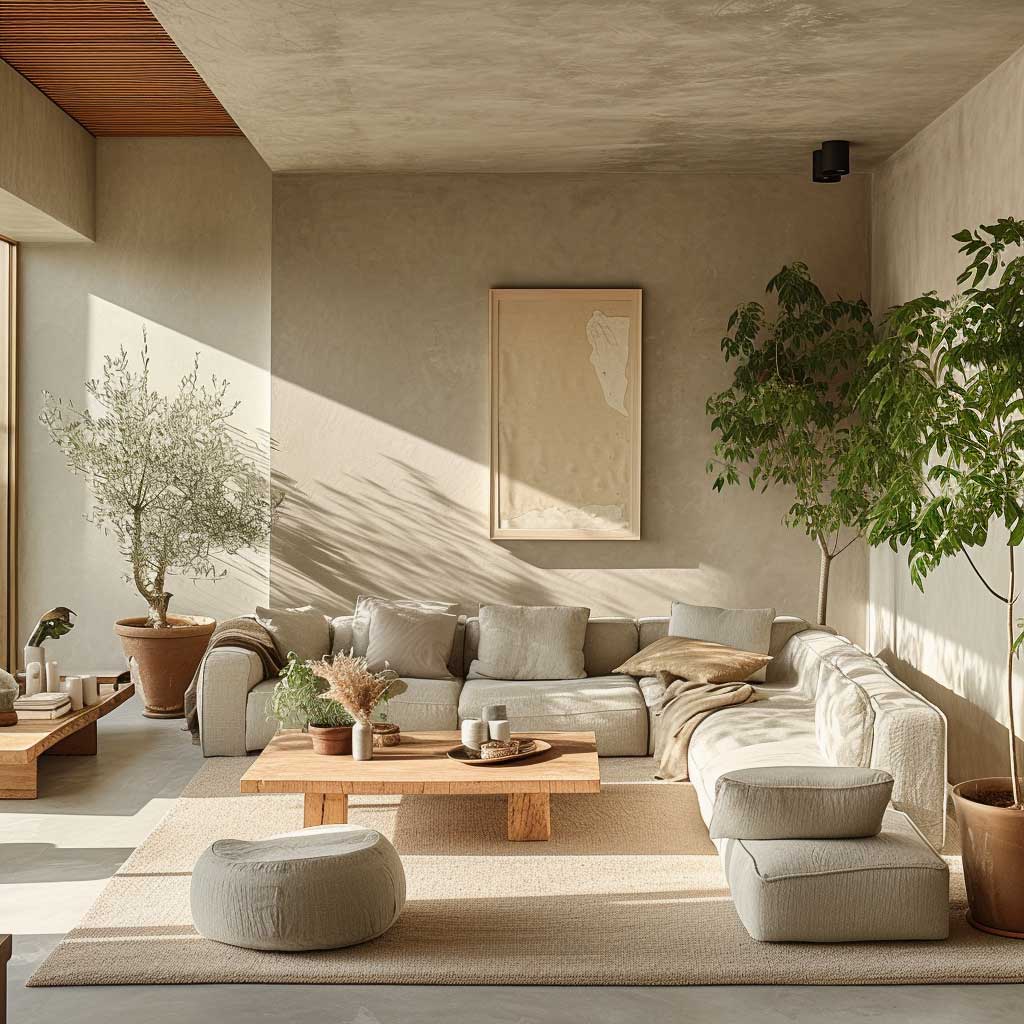

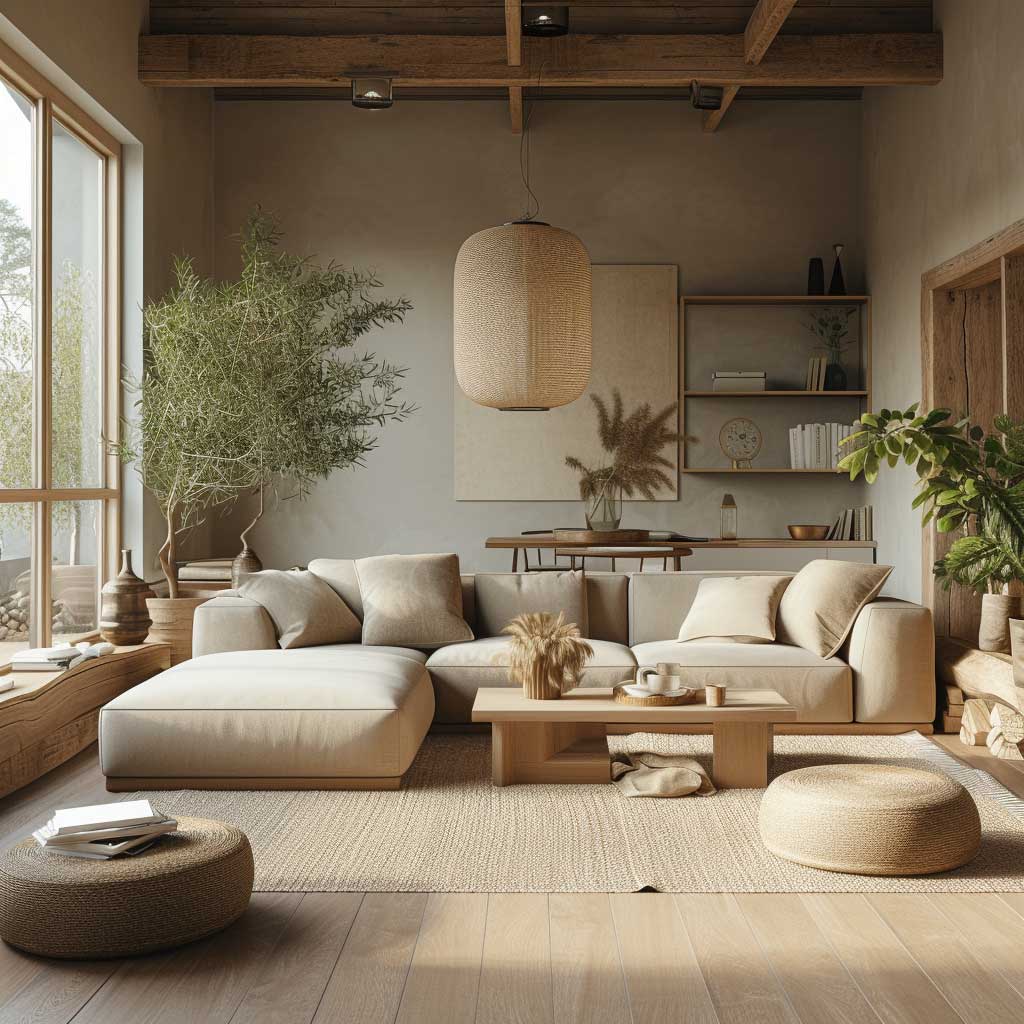
In the realm of interior design, the Japandi color palette stands out for its ability to blend the serene minimalism of Japanese aesthetics with the cozy functionality of Scandinavian style. This unique fusion creates spaces that are both tranquil and practical, emphasizing a connection to natural elements and a love for understated beauty. Central to achieving this harmonious atmosphere in a living room is the use of soothing neutrals, a color scheme that promotes relaxation and peace.
The foundation of a Japandi-inspired living room is its pared-back color palette, where every shade is chosen for its contribution to an overall sense of calm. Soft beiges, warm greys, and muted creams dominate the space, creating a backdrop that feels both airy and inviting. These colors reflect the natural world, drawing inspiration from the soft tones of stone, sand, and wood. The choice of neutrals is deliberate, aiming to create a space that feels like a sanctuary from the outside world, a place of retreat and relaxation.
Furniture in a Japandi living room follows the principle of “less is more,” with each piece selected for its functionality as well as its aesthetic appeal. The muted tones of the furniture complement the room’s neutral color scheme, with pieces often made from natural materials like wood, linen, and leather. These materials add texture and depth to the space, enhancing the tactile experience of the room. A low-profile sofa in a soft grey, paired with a simple wooden coffee table and cream-colored rugs, can anchor the living room, providing a focal point that is both stylish and comfortable.
Natural wood accents are a hallmark of Japandi design, bringing warmth and life to the neutral palette. Whether in the form of floating shelves, a media console, or decorative objects, wood adds a touch of organic beauty to the space. The tones of the wood should complement the neutral color scheme, with lighter woods like oak and ash preferred for their ability to brighten the space and create an open, airy feel.

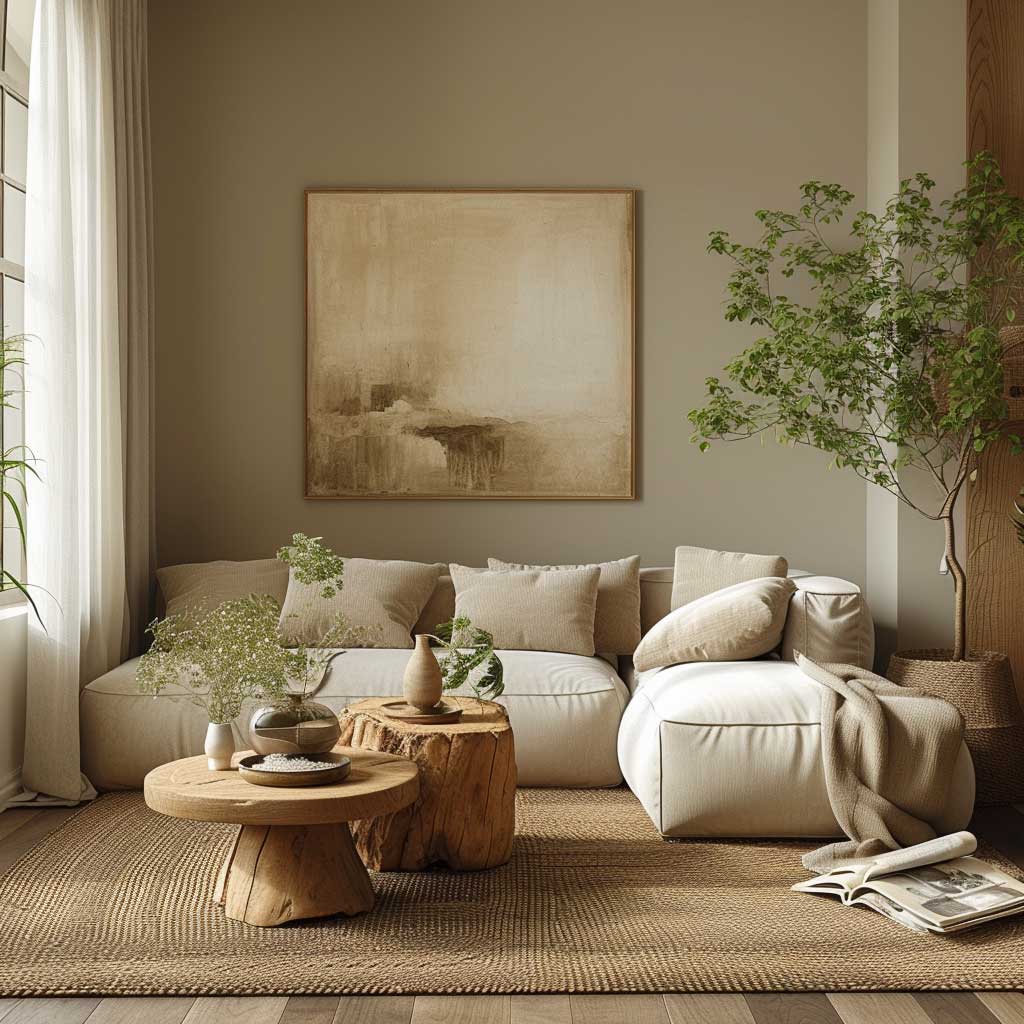
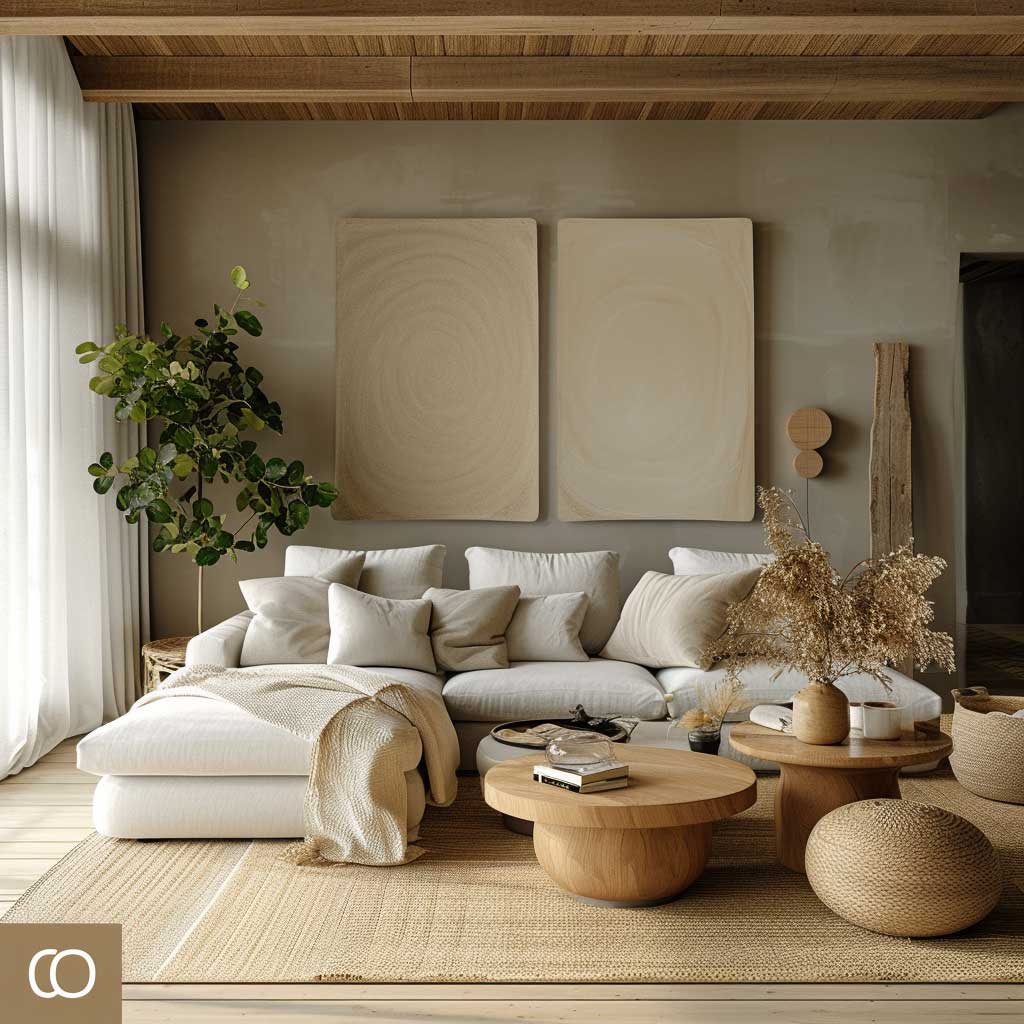

Green plants play a crucial role in enlivening a Japandi living room, adding a splash of color and vitality to the neutral palette. The choice of plants should lean towards those that thrive indoors and require minimal maintenance, such as ferns, snake plants, and pothos. These plants not only enhance the aesthetic appeal of the room but also contribute to the air quality, bringing a piece of nature into the home.
Lighting in a Japandi living room is carefully considered, with an emphasis on natural light to enhance the sense of openness and space. Large windows, possibly dressed in sheer, light fabrics, allow daylight to flood the room, highlighting the beauty of the neutral color palette. For artificial lighting, a combination of floor lamps, table lamps, and pendant lights can create a warm and inviting atmosphere, with fixtures chosen for their simple lines and natural materials.
In conclusion, creating a living room that embodies the principles of Japandi design requires a thoughtful approach to color, material, and light. The soothing neutrals of the Japandi color palette set the stage for a space that is both minimalist and warm, where each element is chosen for its ability to contribute to an atmosphere of tranquility. By combining the serene minimalism of Japanese aesthetics with the cozy functionality of Scandinavian style, it is possible to create a living room that is not just a place to relax, but a sanctuary that nourishes the soul.
Earthy Elegance in Japandi Bedroom Sanctuary
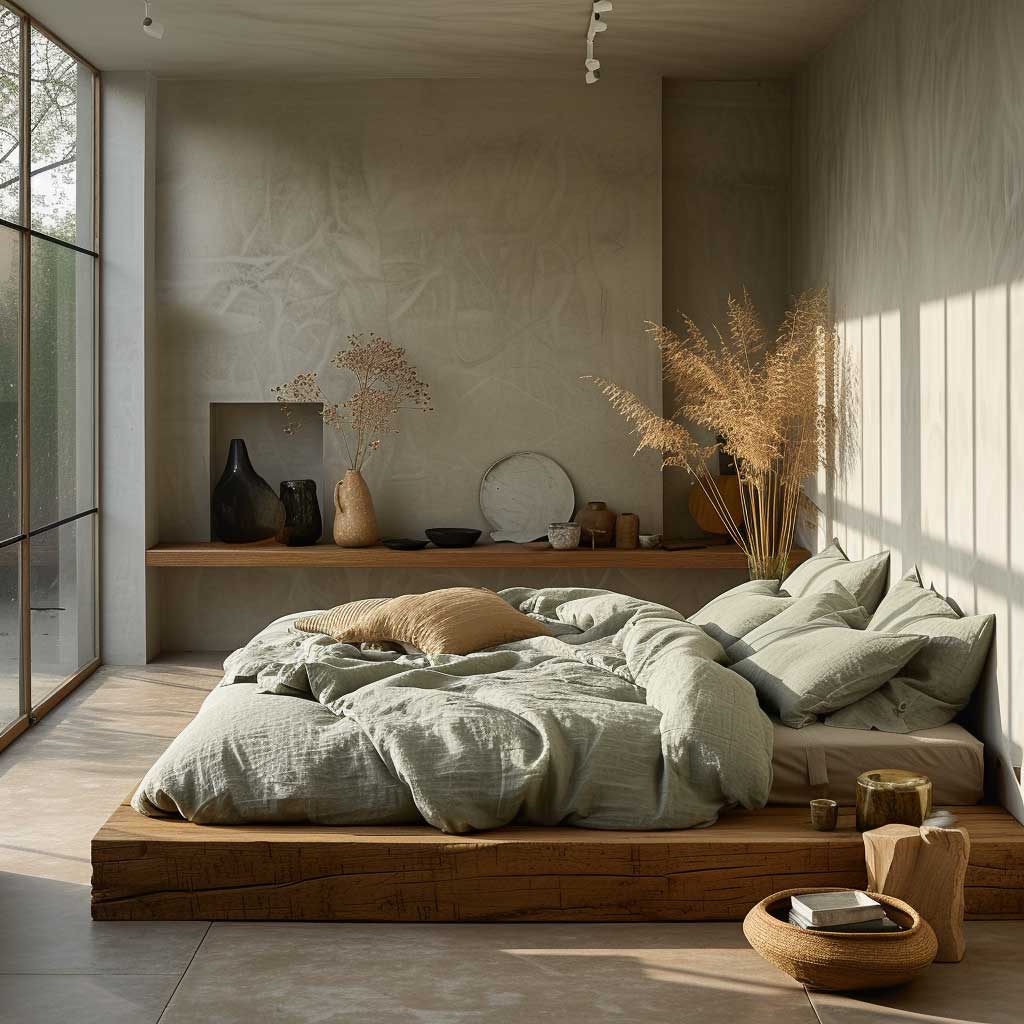
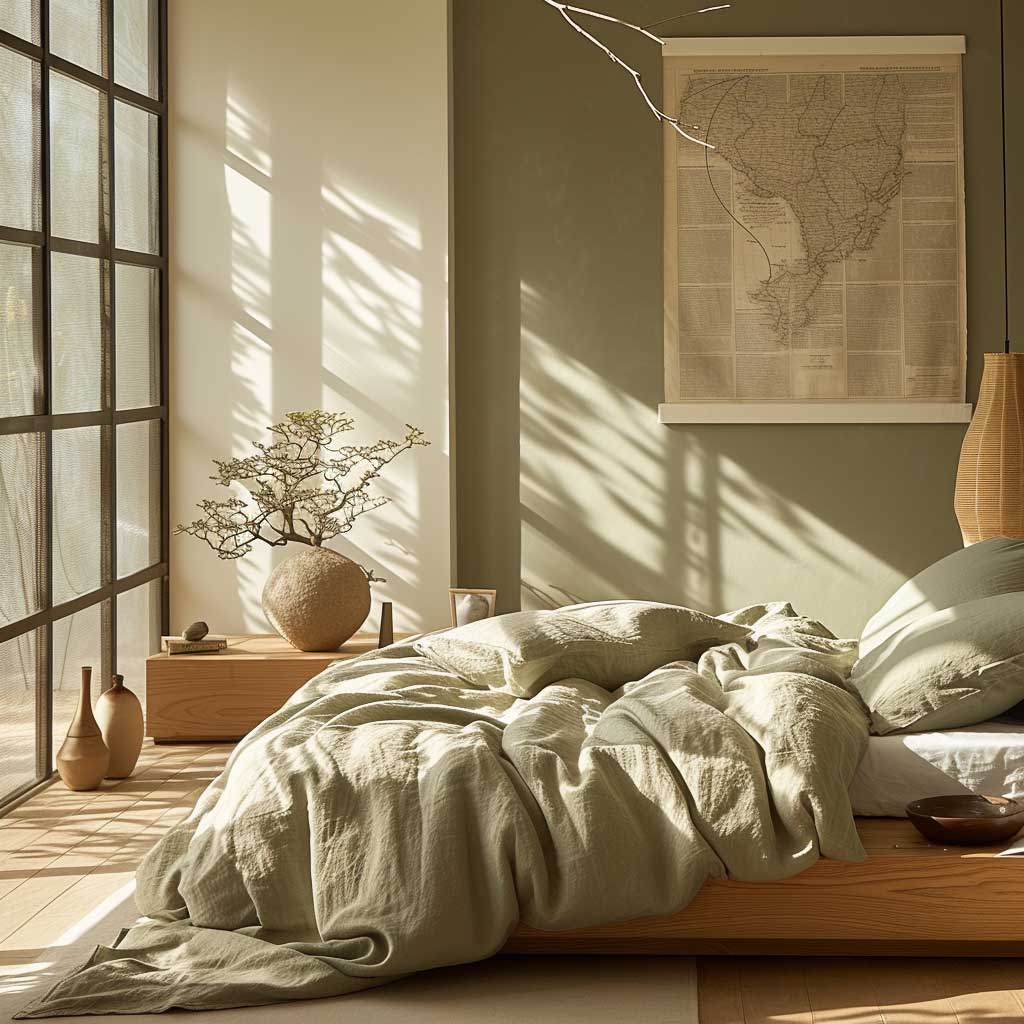
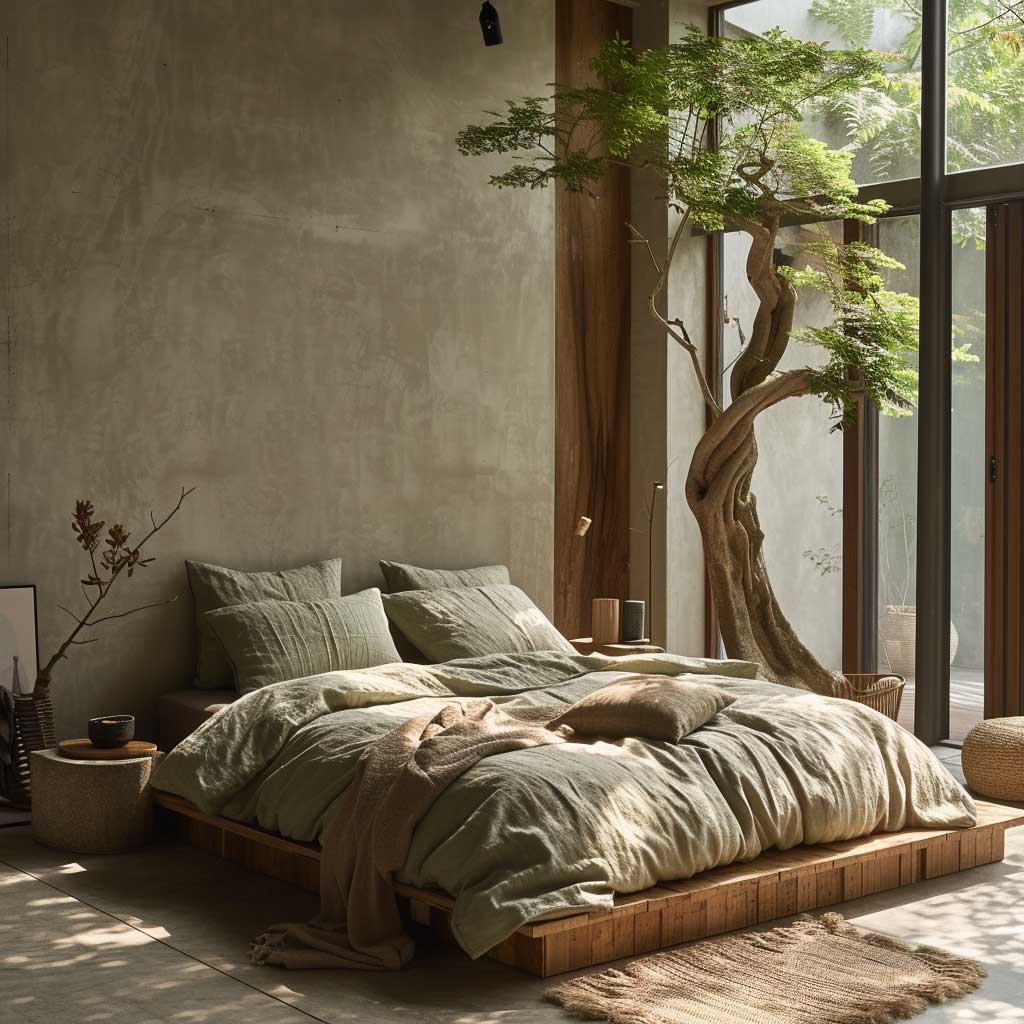
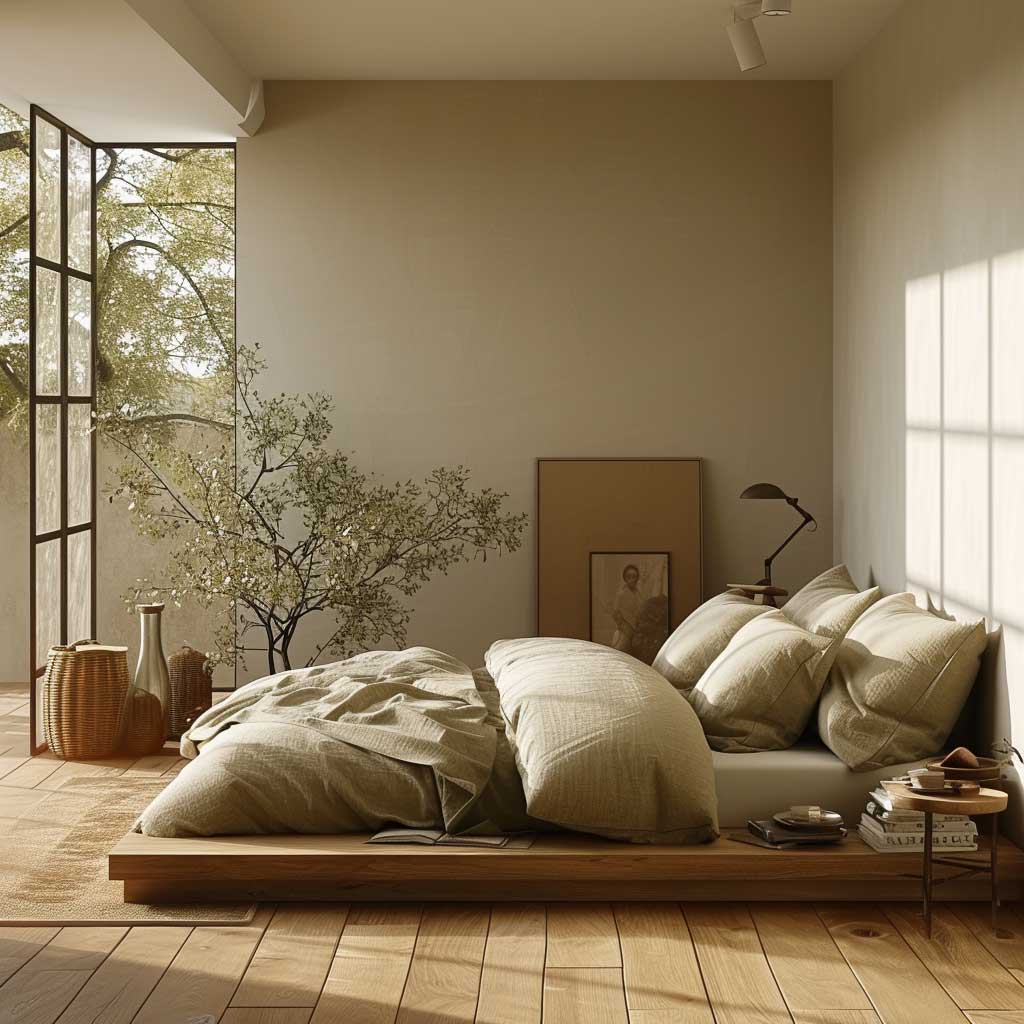
The essence of the Japandi design philosophy, particularly within the bedroom, is its ability to harmonize simplicity with nature, creating spaces that promote rest and rejuvenation. The application of an earthy elegance through the Japandi color palette is central to this design ethos, incorporating hues that echo the natural world to foster a serene sanctuary. This approach to bedroom design not only prioritizes aesthetic harmony but also psychological well-being, crafting an environment where relaxation is inevitable and the chaos of the outside world melts away.
Central to achieving this earthy elegance is the thoughtful selection of color. The Japandi palette is characterized by its muted, nature-inspired tones — think soft browns, deep greens, and the occasional muted terra cotta, which combine to evoke a sense of grounding and calm. These colors draw inspiration from the natural landscape, reflecting the tranquility of forests, earth, and stone. When applied to the bedroom, they contribute to a space that feels both cocooning and expansive, a place where the mind can wander freely in contemplation and calm.
Furniture plays a pivotal role in embodying the Japandi aesthetic, with a focus on low-profile, minimalist pieces that blend functionality with natural beauty. A platform bed made from light, untreated wood offers a perfect example, its simple form and natural materiality instantly bringing a sense of peace and simplicity to the room. Complemented by linen bedding in earthy tones, the bed becomes not just a piece of furniture but a centerpiece that invites rest and relaxation.
Textural elements are key in adding depth and interest to the Japandi bedroom, without overwhelming the space with excessive decoration. Linen curtains, wool throws, and woven rugs introduce a tactile dimension that enhances the room’s sensory experience, inviting touch and interaction. These materials, chosen for their natural qualities and sustainable credentials, further reinforce the connection to the natural world, a cornerstone of the Japandi aesthetic.
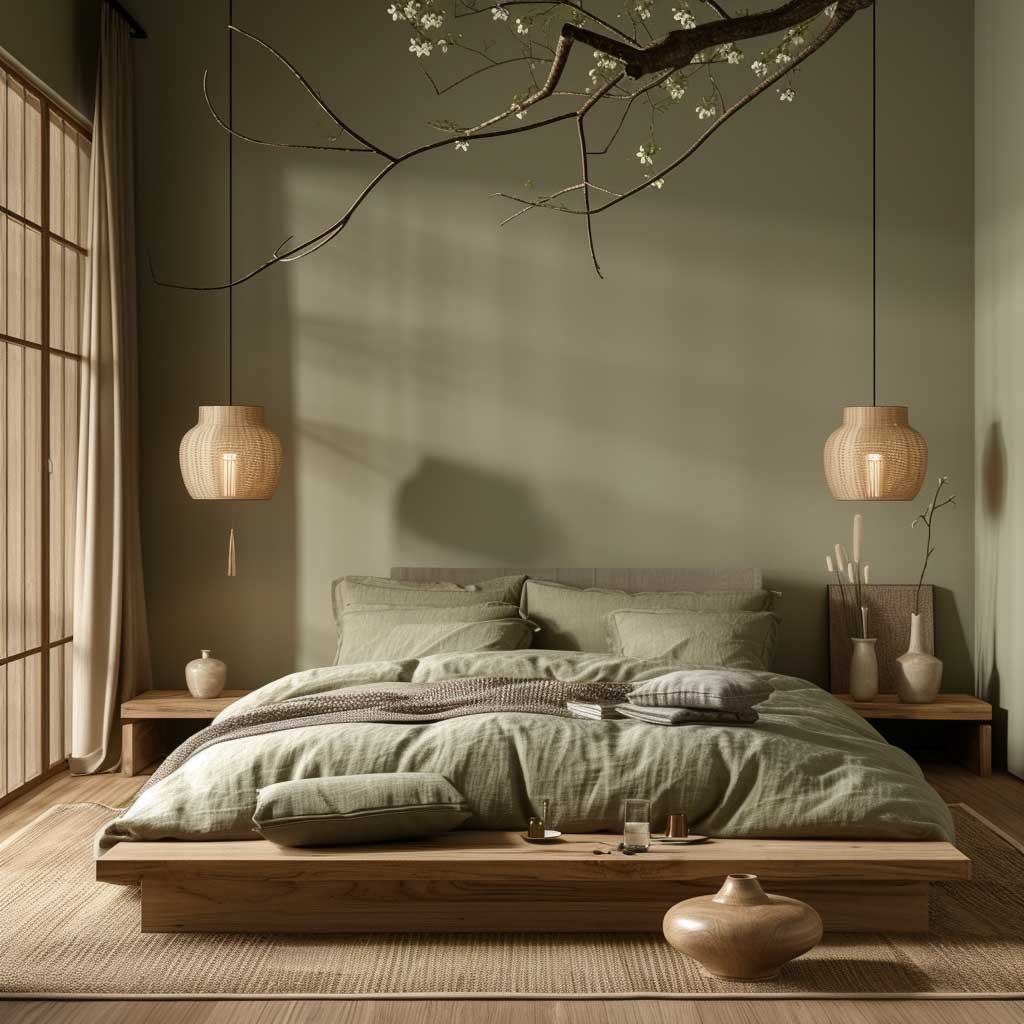
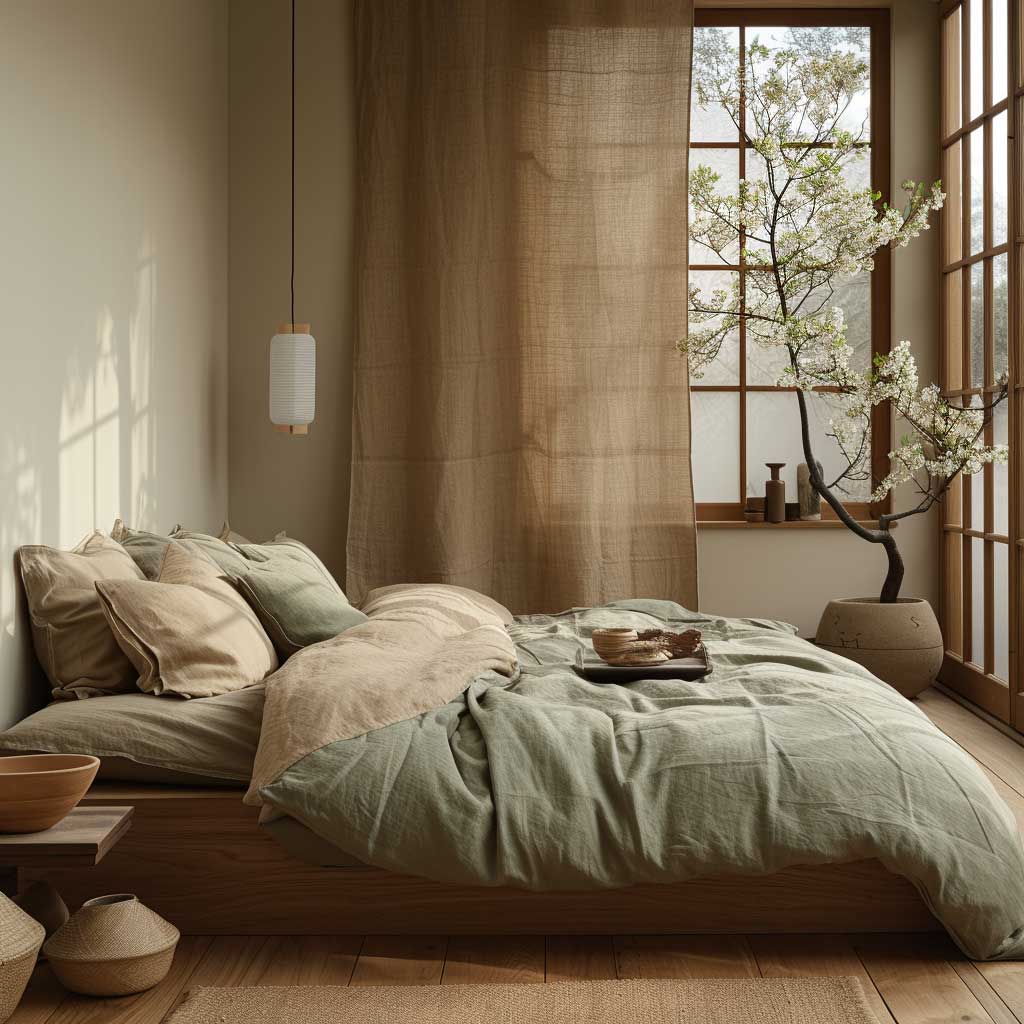
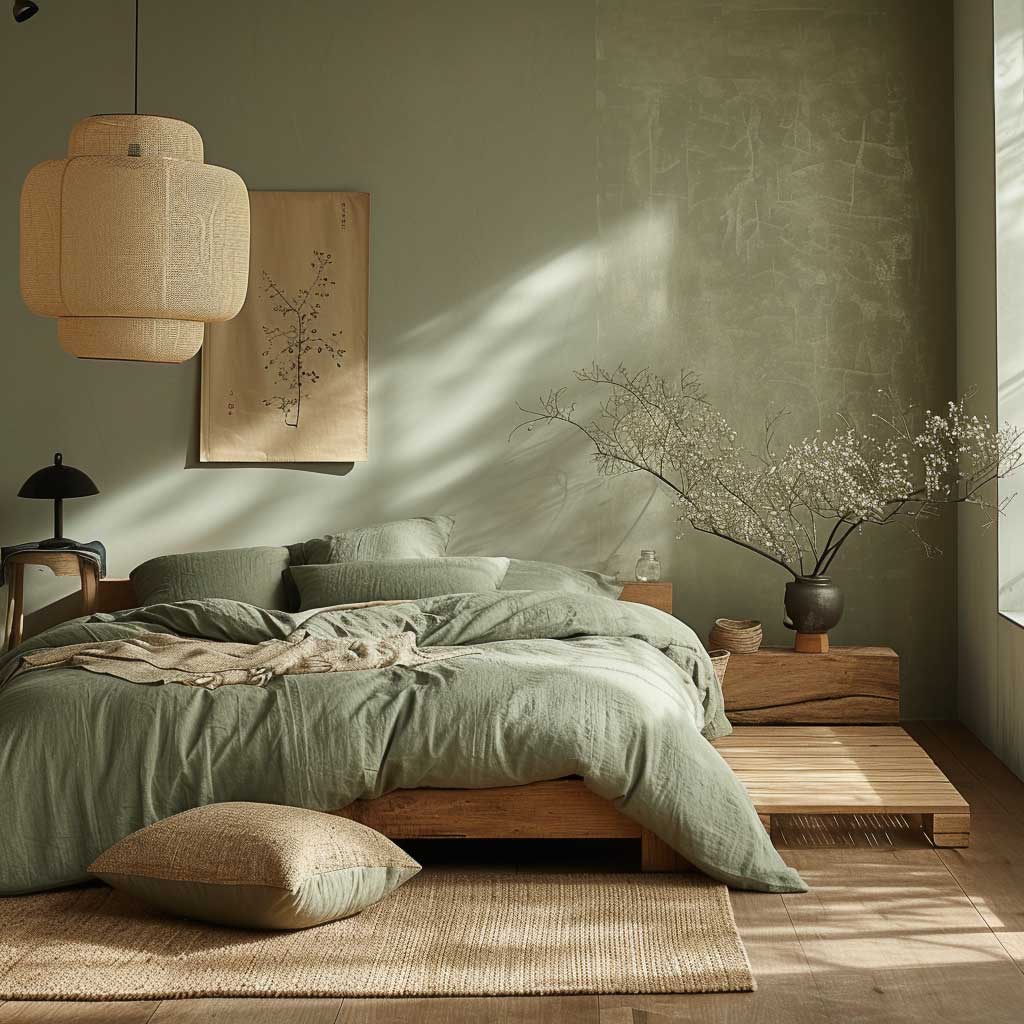

The concept of bringing the outdoors in extends beyond the use of natural materials and colors; it also involves integrating actual elements of nature into the bedroom. Potted plants that thrive in low-light conditions can add a vital burst of greenery, purifying the air while adding visual interest. The choice of plants, from the sculptural beauty of a snake plant to the cascading leaves of a pothos, should complement the room’s earthy palette, reinforcing the sense of being enveloped by nature.
Lighting in a Japandi bedroom sanctuary is another crucial element, with a focus on creating a soft, diffused glow that mimics the gentle light of dawn or dusk. Ambient lighting, achieved through the use of table lamps with fabric shades or wall-mounted sconces, can cast a warm, inviting light that enhances the room’s calming atmosphere. The strategic placement of lighting, combined with the reflective qualities of the earthy color palette, can transform the space, making it feel both intimate and open.
In crafting a bedroom that embodies the principles of Japandi design, the goal is to create a space that is not only visually appealing but also emotionally resonant. The earthy elegance of the Japandi color palette, when combined with minimalist furniture, natural textures, and elements of greenery, offers a blueprint for a bedroom that is a true sanctuary. It’s a space where the simplicity of design meets the complexity of nature, resulting in a room that nurtures the soul and invites restorative rest.
Harmonious Contrast in Japandi Dining Area
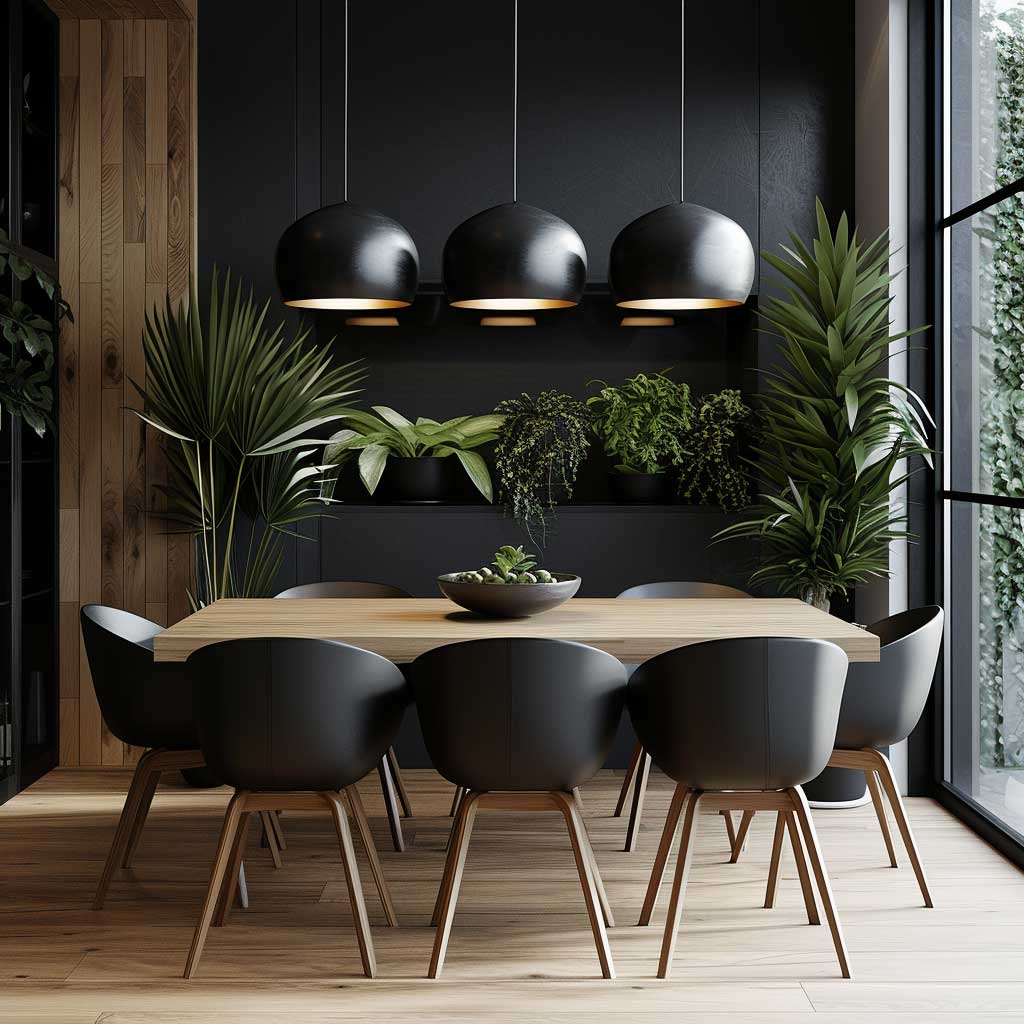



Creating a dining area that captures the essence of Japandi design requires a delicate balance between contrasting elements, where the serene simplicity of Scandinavian aesthetics meets the refined minimalism of Japanese style. This blend, known as Japandi, is celebrated for its ability to foster spaces that are both functionally elegant and spiritually grounding. The key to achieving this in a dining area lies in the harmonious contrast of the Japandi color palette, which combines muted, natural tones with bold, dark accents to create a space that is inviting and balanced.
At the heart of the Japandi design philosophy is a color palette that draws inspiration from nature, favoring soft, earthy tones that evoke a sense of peace and tranquility. In the dining area, this translates to walls painted in warm neutrals, like off-white or soft gray, which serve as a serene backdrop for daily meals and gatherings. These light hues are complemented by darker tones, such as charcoal or deep brown, introduced through furniture and accent pieces. This juxtaposition of light and dark creates a visually striking contrast that defines the Japandi aesthetic, emphasizing clean lines and the beauty of simplicity.
Furniture selection is crucial in a Japandi-inspired dining area, where the emphasis is on quality, craftsmanship, and the inherent beauty of materials. A large, solid wood dining table, preferably in a light oak or ash, stands as the centerpiece of the room, its natural finish and simple form exuding warmth and inviting touch. Surrounding the table, chairs in a darker hue or with black metal frames offer a striking visual contrast, marrying the minimalist elegance of Scandinavian design with the sophisticated simplicity of Japanese aesthetics. This intentional play of light and dark not only adds depth to the space but also highlights the furniture’s design and structure.
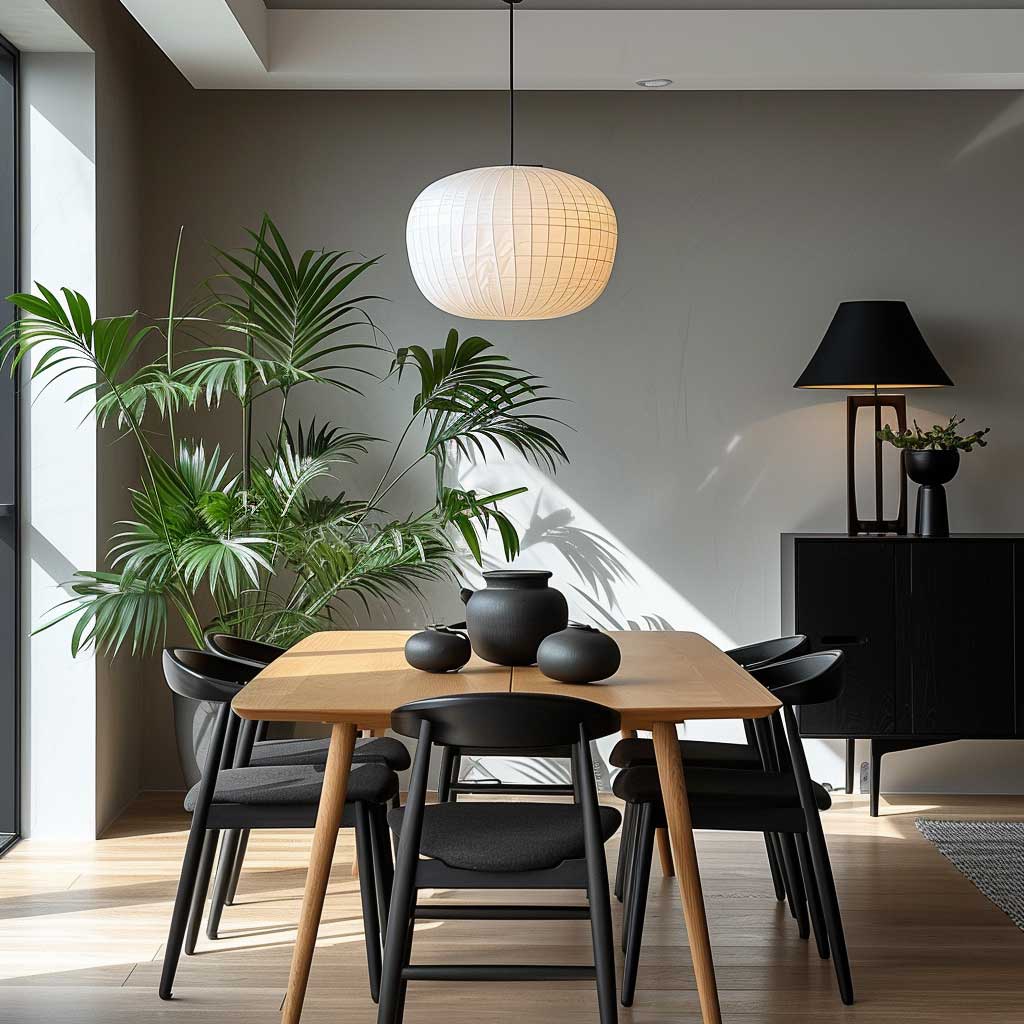

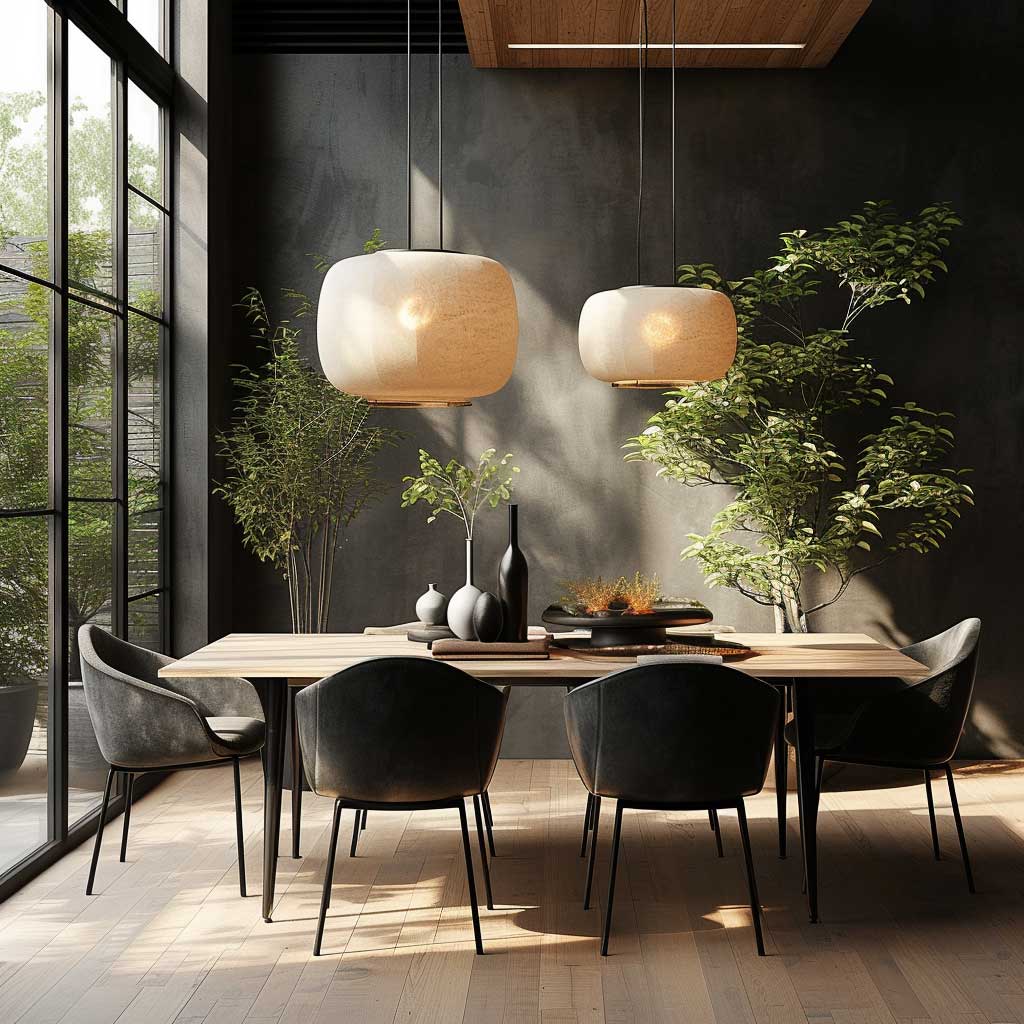
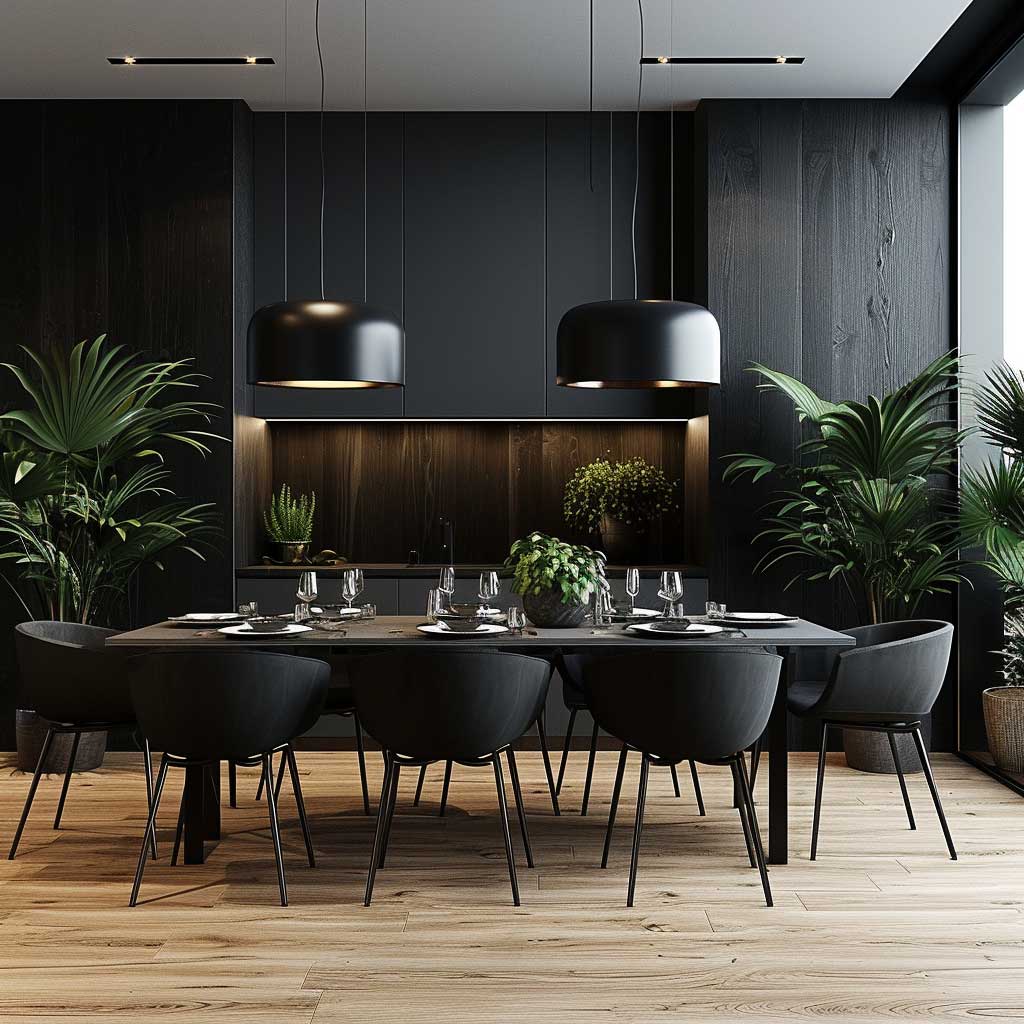
Texture plays a significant role in Japandi design, adding layers of interest and enhancing the dining area’s sensory appeal. Woven rugs under the dining table, ceramic tableware, and linen napkins introduce tactile elements that contrast with the smoothness of the wood and the crispness of the walls. These textural details, rooted in natural materials, reinforce the connection to the natural world, a key component of the Japandi style. Additionally, incorporating greenery through potted plants or a single, sculptural branch in a vase can breathe life into the dining area, adding a vibrant contrast to the muted color scheme.
Lighting in a Japandi dining area is strategically employed to enhance the space’s ambiance and highlight the contrast between light and dark. Pendant lights with organic shapes or made from materials like paper or frosted glass can cast a soft, diffused light that accentuates the warmth of the wood and the depth of the darker tones. The use of candles or dimmable lights during evening meals adds an element of intimacy and serenity, allowing for a transition from the functional aspects of dining to a more contemplative, relaxed experience.
The Japandi dining area stands as a testament to the beauty of balance, where every element, from the color palette to the furniture and accessories, is carefully selected to create a harmonious whole. This space is not just about eating but about celebrating the everyday rituals of gathering and nourishment within a setting that embodies tranquility and elegance. Through the harmonious contrast of its color palette and the thoughtful integration of natural materials and textures, the Japandi dining area becomes a sanctuary of calm and beauty, reflecting a lifestyle that values simplicity, quality, and the art of slow living.
Embracing the Japandi color palette is about more than just choosing colors; it’s about creating a space that reflects balance, simplicity, and a deep connection to the natural world. The magic of this design approach lies in its ability to transform homes into sanctuaries of tranquility, where every element works in harmony to produce a serene and uplifting environment. By incorporating the muted, earthy tones of the Japandi color palette, alongside natural materials and minimalist decor, any home can become a peaceful retreat from the hustle and bustle of everyday life.












